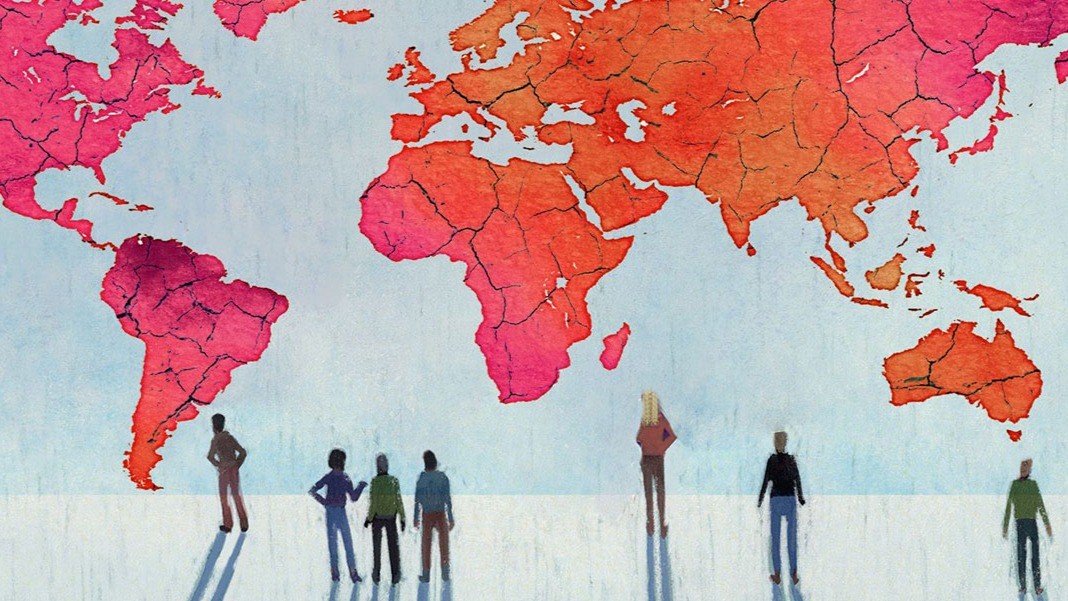In an era marked by geopolitical fragmentation, technological disruption, and rising stakeholder expectations, today’s boardrooms face a profound strategic dilemma: how to lead with both global responsibility and local resilience.
In this article, Helle Bank Jorgensen explores this tension and challenges directors and executives to rethink what it means to be “global” in a world increasingly shaped by local intelligence, moral risk, and the urgent need for sustainable transformation. This is not just a call to action — it’s a call for reflection, courage, and adaptive leadership.
The challenge of leading with global responsibility, local resilience, and purpose
In a fragmented world, how do we lead with global responsibility and local resilience — without losing our sense of direction or purpose?
Leadership today is not about choosing sides. It’s about sensing shifts.
- Shifts in geopolitics, as trade blocs harden and protectionism re-emerges.
-
Shifts in technology, as AI decentralises decision-making, challenge traditional hierarchies and force us to rethink the architecture of scale.
- Shifts in stakeholder expectations, as the voices of civil society, employees, and future generations grow louder and more urgent.
It is no longer about East versus West or North versus South. It’s about a more profound reframing: rethinking what it means to be truly “global” in a world that increasingly demands we think, act, and deliver with local intelligence.
Many boardrooms are finding themselves caught in the crosswinds. Companies that have embraced ambitious sustainability strategies are now contending with unpredictable policy moves and investor hesitation.
Each sector faces a different variation of the same strategic dilemma: How do we lead responsibly when the systems we rely on are in flux — and the rules keep shifting? Firms trying to relocate or diversify their operations to de-risk face the reality that rebuilding local capacity — whether in energy, infrastructure, or talent — takes time, capital, and conviction.
Earlier this year, HSBC chair Sir Mark Tucker warned that globalisation, as we knew it, may have “run its course.” The rise of regional alliances and protectionist sentiment — from Washington to New Delhi — suggests a reordering of trade, influence, and economic integration. Countries that once prided themselves on open markets are now tightening borders, subsidising domestic industries, and using tariffs as a geopolitical tool.
At the same time, we’re witnessing an explosion in localisation technology. Artificial intelligence transforms how companies adapt products, services, and messaging to hyper-local markets. AI-driven localisation tools are helping companies navigate language, cultural nuance, and regulatory complexity — and do it at speed and scale.
Meanwhile, environmental and social expectations continue to intensify. Yet, many investors still focus disproportionately on short-term financial returns, leaving boards stuck in the middle — mandated to lead responsibly, but measured quarterly.
What does board leadership look like in this world?
This is the real test of our time: navigating not just market risk but also moral risk. Because nature does not recognise borders, nor do trust, reputation, or generational expectations.
In this world, strategy cannot be static. Boards need more than dashboards. They need insight. They need safe, curated spaces to challenge assumptions, rehearse futures, and hear perspectives they would otherwise never encounter.
So, what does board leadership look like in this world?
It looks like boards that listen before they leap. It looks like strategies that align with both planetary boundaries and political realities. It looks like courage — tempered by humility, driven by purpose, and aware of its ripple effects.
As the world continues to shift — whether toward more walls or more bridges — the real challenge for today’s boardrooms is not simply choosing between “global” and “local.” It’s learning how to integrate the two with wisdom, agility, and integrity.
Boards that will succeed in turbulent times have not only the best forecasts but also the clearest lived and respected values.
Those willing to pause, ask more challenging questions, listen across borders, and commit — not to perfection, but to preparedness.
It won’t be easy. It won’t be linear. But it may just be the defining leadership test of our time. And perhaps, the greatest opportunity.
Empower your board and directors with upskilling solutions that give them the insight they need to succeed.
Find out more


